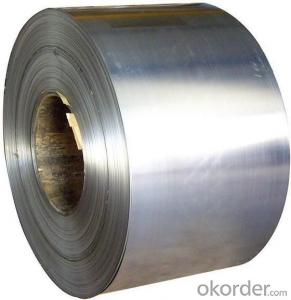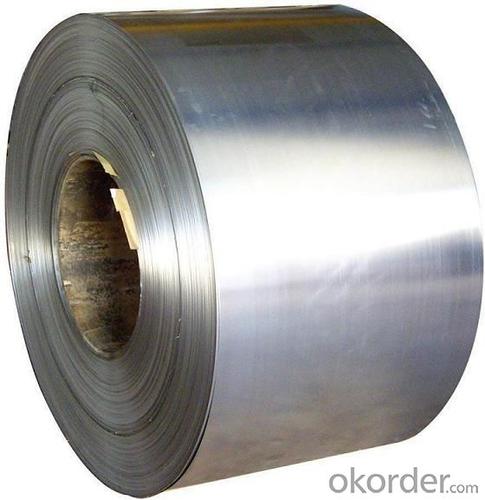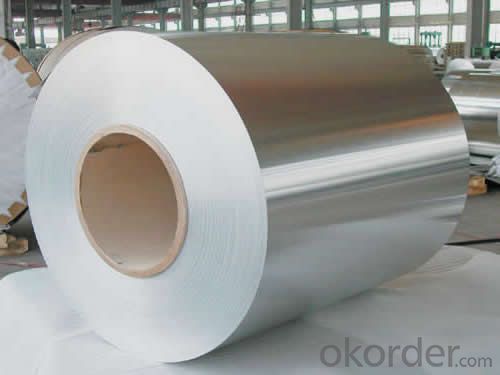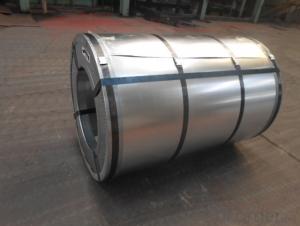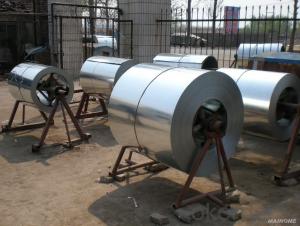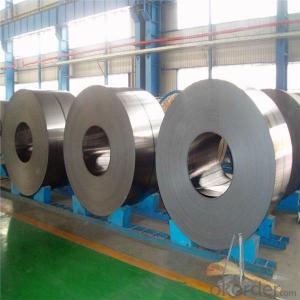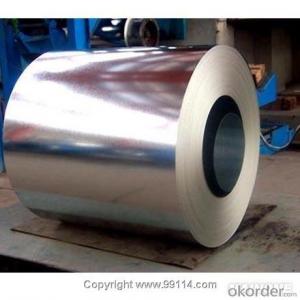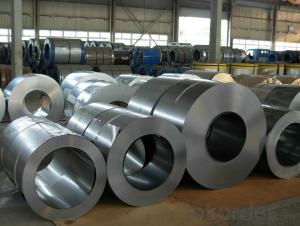Stainless steel cold rolled coil for construction
- Loading Port:
- Shanghai
- Payment Terms:
- TT OR LC
- Min Order Qty:
- 1 m.t.
- Supply Capability:
- 800 m.t./month
OKorder Service Pledge
OKorder Financial Service
You Might Also Like
Product: | competitive price astm ss304 cold rolled stainless steel roll coil for construction |
Grade: | 304 |
Standard: | ASTM,AISI,JIS,EN,DIN,GB |
Surface: | 2b |
Thickness: | cold rolled:0.3mm-6mm,hot rolled:3-100mm |
Width: | 1000mm/1219mm/1250mm/1500mm/1524mm/1829mm/2000mm, or as customer’s requires. |
Length: | As customer’s requires. |
Edge: | Slit/Mill Edge |
Origin: | TISCO,POSCO,LISCO,JISCO,BAOSTEEL,BAOXIN,Eastern Special Steel etc |
Productivity: | 800MT/Month |
MOQ: | 1 Ton |
Payment Term: | 30%T/T in advance ,the balance against the B/L copy 30%T/T in advance ,the balance against the L/C at sight 100%L/C at sight
|
Price Term: | FOB/CFR/CIF |
Delivery: | 10 days after received the deposit of T/T 10 days after received the deposit of L/C original |
Packaging: | standard export packing |
Application: | Plate heat exchanger, bellows, household goods (1,2 tableware, cabinets, indoor pipes, water heaters, boilers, bath), auto parts (windshield wipers, muffler, moldings), medical equipment, building materials, chemical, food industry , agriculture, ship parts, and so on. |
Chemical composition&Mechanical properties
| Chemical composition: | ||||||
| C | Si | Mn | Cr | Ni | S | P |
| ≤0.07 | ≤1.0 | ≤2.0 | 17.0~19.0 | 8.0~11.0 | ≤0.03 | ≤0.035 |
| mechanical properties: | ||||||
| Tensile strength σb(MPa) | Conditions yield strength σ0.2 (MPa) | Elongation δ5 (%) | Section shrinkage ψ(%) | Hardness: | ||
| ≥ 520 | ≥ 205 | ≥ 40 | ≥ 60 | ≤ 187HB; ≤ 90HRB; ≤ 200HV | ||
- Q: How are steel coils used in the production of gutters and downspouts?
- Steel coils are used in the production of gutters and downspouts as they are uncoiled and fed into a roll-forming machine. This machine shapes and cuts the steel into the desired gutter or downspout profiles. The steel coils provide the necessary raw material for creating durable and long-lasting gutters and downspouts that effectively channel rainwater away from buildings.
- Q: How are steel coils used in the production of agricultural implements?
- Steel coils are used in the production of agricultural implements as they are typically rolled into specific shapes and sizes to create parts such as blades, tines, and plowshares. These coils provide the necessary strength and durability required for farm machinery to withstand the demanding conditions of agricultural work.
- Q: I'm missing the arguement, and I've seen another question like this... but the steel toe issue has 2 scenario's right?... Let me label them out, the 2nd is the one that no one talks about?Note to anyone - how are your catapillar boots, your wolverines, and then your cheap walmart/sears brands?1. Steel toe on, toes get cut off because of something falling on them. OUCH!.. Reattach perhaps?2. This one is what I question. No steel toe, large object falls on toes. SMASH... Pudding in your shoes.Wouldn't it be safer to say you'de be better off with a steel toe?
- You're talking worst case scenarios here man. The steel toe isn't for parking tractors on, it's to keep you going when everything less than catastrophic occurs. It's like safety goggles protecting a person's eyes. They work great, but only to a point...
- Q: Is 440 steel relatively strong or weak?
- medium-strong....you probably mean Steel 44... right?
- Q: given the buoyant economic growth of india, what you guys think about steel industry? what can be the major issues in this industry in the coming days
- NAFTA became a unfastened commerce contract it is fairly a lot a republican proper. unfastened markets are a sturdy element. each and every so often unfastened markets deliver approximately the shortcoming of jobs in one sector yet that would not advise unfastened commerce is undesirable. opposition like that ensures that capital is spent in it is best way. Proping up death industries isn't a sturdy concept. i know it is not a favored element to declare, even though it is the certainty. would desire to we've propped up the horse and carriage marketplace while autos got here alongside so as that horse handlers did not lose thier jobs? in all risk not. unfastened commerce is a sturdy element. That being mentioned, i don't think of that Obama will merely blanketly wipe out any coverage by means of fact it became a Bush coverage. he isn't that stupid. If it became a sturdy coverage that labored, i'm particular it will be retained.
- Q: How can steel coils be recycled?
- Steel coils can be recycled by first removing any non-steel materials attached to them, such as plastic or rubber. The coils are then shredded into smaller pieces and sent to a steel mill, where they are melted down and transformed into new steel products. This process helps conserve natural resources, reduces energy consumption, and minimizes waste.
- Q: i have noticed in guns, and artillery the shell casings are always made out of brass. brass is expensive, weaker and dosnt look as good as steel. so why use it for casings? i am aware some of the case must be deformed. but just a small brass percussion cap could be used just for that and steel for the rest. whats going on?
- Brass has a natural lubricity that makes easier to extract after firing. It also can easily be resized for reloading. Steel offers neither of these properties. It cannot be reloaded so is good for only one single use. Brass has simply shown, by virtue of its metallic characteristics, to be the best choice for manufacturing cartridges.
- Q: How are steel coils used in the manufacturing of automotive components?
- Steel coils are used in the manufacturing of automotive components by being formed and shaped into various parts such as frames, body panels, and suspension components. These coils are typically cut, stamped, and welded to create the desired shapes and sizes needed for the automotive industry.
- Q: What are the common methods of welding steel coils?
- The common methods of welding steel coils include shielded metal arc welding (SMAW), gas metal arc welding (GMAW), flux-cored arc welding (FCAW), and submerged arc welding (SAW).
- Q: What are the common uses of cold rolled steel coils?
- Cold rolled steel coils are commonly used in a variety of industries and applications. Some of the common uses include manufacturing automotive parts, appliances, construction materials, and electrical components. The cold rolling process provides the steel with a smoother surface finish, improved strength, and better dimensional accuracy, making it suitable for various manufacturing purposes.
Send your message to us
Stainless steel cold rolled coil for construction
- Loading Port:
- Shanghai
- Payment Terms:
- TT OR LC
- Min Order Qty:
- 1 m.t.
- Supply Capability:
- 800 m.t./month
OKorder Service Pledge
OKorder Financial Service
Similar products
Hot products
Hot Searches
Related keywords
